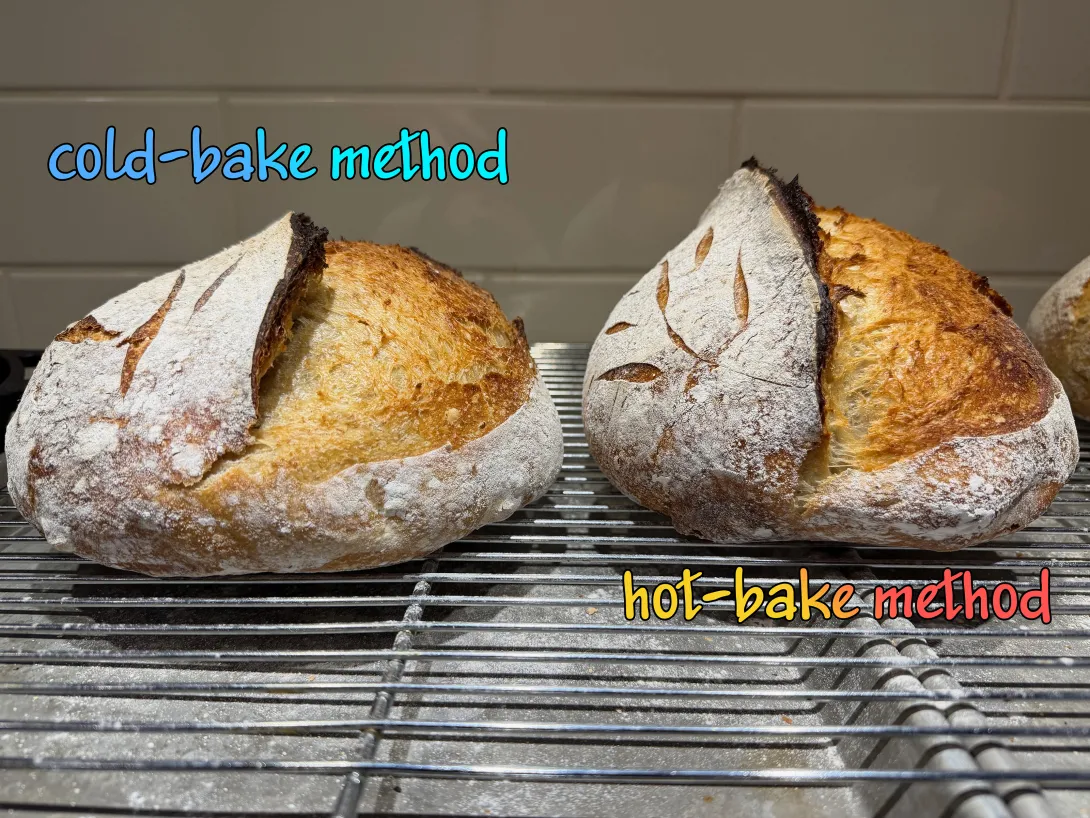
I tried the cold-baking Dutch oven method for the first time. Bread taken from refrigerator (having cold-proofed for 12 hours), rested at room temperature for 30 minutes and placed in a cold Dutch oven and into a cold oven. Set oven to 450°F (232°C). Baked for 40 minutes, removed cover and baked for an additional 20 minutes.
Soon after I baked a loaf using my usual preheating method. Dutch oven preheated for 1 hour at 450°F, dough taken from refrigerator and rested at room temperature for 30 minutes. Dough baked for 30 minutes with cover. Cover removed and bread baked an additional 8 minutes.
The cold-bake method results in an acceptable loaf of bread and you can save time by skipping the preheating step. The hot-baking method resulted in a taller loaf (better oven spring) and a more distinctive ear.
My Dutch Oven has been retired completely in favor of my Granite Ware roasters. Much more efficient require no excessively long preheat, light weight produce loaves that look exactly like the Dutch Oven loaves and they cool off quickly after use.
Give them a try. 🙏
I tried different set-ups for steaming until I figured out that our GE wall oven apparently vents the steam. I switched to a pre-heated Dutch oven or a rectangular cast-iron Emeril (remember him?) smoker for oval loaves. The problem was that the smoker could accommodate only one loaf at a time, limited to 900g or so.
I eventually went to this set-up and procedure, which works better than the cast-iron pot and accommodates 2 loaves or one double:
It's not really more work than dealing with a Dutch oven and it seems to work better. The two-stone set-up (with no water pan) works pretty well for pizza.
I've swapped over to using a Falcon roaster too (similar to the Graniteware). It goes into a cold oven and bakes a boule or batard in 55 minutes. A second bake would go in after that for 30 minutes.
If I want to bake two loaves at once I do the same but inside a pair of stainless steel roasting pans (from Ikea, but cheap from many other brands too). I got the largest size that would fit my oven and use one as a lid, upside down, on the other. The same setup is good for a pair of loaf tins or a batch of rolls. A spritz with a garden sprayer takes care of the steam. No preheating.